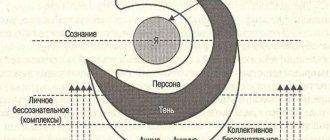For many people, the assessment of information (and decision-making) is based on a sensory attitude towards it; it is subjective. For example, something can be liked or disliked, pleasant or unpleasant, loved or unloved, moral or immoral, etc. Typically, this method of assessing information is accompanied by emotional manifestations and is associated with the predominant development of the feeling function. Such people are classified as a feeling type of personality.
These are soft-hearted, merciful people who take everything very seriously. Their main quality, their indicative feature, is sensitivity and responsiveness to the needs of other people. They often put themselves in other people’s shoes, put themselves in their position, share other people’s pain, and therefore make decisions with the help of feelings. They are willing to do almost anything to help others, even at the expense of their own comfort, and sometimes find themselves in a situation where they have to put aside their own affairs in order to help everyone who needs their help.
Feeling types really don't like to participate in things that might hurt other people's feelings.…….
Psychological types according to K.G. Jung (brief typology of Jung)
In his book “Psychological Types” K.G. Jung identifies 8 types of people based on traits of vertiginity (introversion and extroversion), rationality and irrationality, as well as 4 mental functions (thinking, feeling, intuition and sensation). Two of these functions are strictly rational (thinking and feeling), i.e. those who perceive information from the outside in accordance with a preset for a certain perception, and two - irrational (intuition and sensation), who perceive information directly, without a preset. But each of the four functions of the psyche can be either extroverted or introverted, based on which 8 types are distinguished, and each of them corresponds to a certain basic function of the psyche.
Why is Jung's typology needed?
In the process of his psychological practice and observation of his practicing colleagues, Jung discovered that there are differences between the specifics of the theories and practical work of his colleagues (Adler and Freud) depending on different personal characteristics, and suggested that different attitudes of consciousness lead to different perceptions of reality and different interactions with her. Jung came to the conclusion that it was necessary to systematize the typological outlines of his predecessors in order to outline the boundaries of individual differences between people. Understanding and accepting these differences is important for an individual approach to each unique individual and the development of respect for the typological characteristics of each person. In addition, the typology is a kind of personality map, which can be used to navigate the strong, conscious and well-controlled functions of the psyche and highlight those functions that are poorly controlled, archaic and in need of special human attention.
Extraversion and introversion
According to K.G. According to Jung, depending on the attitude of consciousness and its focus either on the internal process or on objects of the external world, people can be divided into introverts and extroverts. Unlike Eysenck, Jung did not consider sociability or unsociability the main indicator of extraversion and introversion, respectively, because highlighted a more significant distinctive feature - where a person’s consciousness and attention is directed, outward or inward, what is more important for him - objects of the external world or internal processes of the soul.
Extroverts are characterized by a focus of consciousness on objects and processes of the external world. For such a person, the internal process always remains in the background, in the shadows, and he pays much less attention to it, due to which he has less control over it than what is happening in the outside world. An extrovert, like a magnet, is attracted to the objects of the external world, and they dominate him, always having greater power and value than what is happening in his soul. Those. An extrovert is a person who always puts circumstances and changes in the outside world at the forefront when choosing a strategy for his actions. For him, the objective is higher than the subjective, and the collective often prevails over the individual in value.
Introverts, on the contrary, are distinguished by the focus of their psyche on their internal processes. Such people have difficulty paying attention to external objects and processes, since the subjective is higher than the objective for them, and the inner world is always more real and more important than the external. An introvert is a person who is completely immersed in the contemplation of what is happening in his soul and who refracts all external events through the prism of such perception, focusing on the value of their subjective interpretation. The introverted attitude of consciousness is often mistakenly considered egocentric, however, upon careful examination, this opinion turns out to be erroneous, because subjectivity in its purest form is the Self, which is much broader than the individual Ego.
Rationality and irrationality
Rational types include thinking and feeling, since when perceiving an external object or internal process they are always guided by a predetermined attitude of consciousness, i.e. pass their perception through the prism of a pre-formed prejudice or perception grid. Rational people rely on the values of prudence and consistency in both information processing and decision making.
Jung includes the intuitive and sensing types as irrational types, whose perception and actions are characterized by a direct reaction to changes in external and internal processes. These types have a special sensitivity to direct perception and response, i.e. they live outside the framework of the concept of reason, as if going beyond its limits and relying on their own actual experiences.
Hierarchy of functions (leading, auxiliary, tertiary and subordinate functions)
In the human psyche, there are a total of 8 functions of consciousness - extroverted and introverted thinking, feeling, sensing and intuition, but they are located hierarchically. Jung described 4 functions in their relationship; the descriptions of the remaining 4 were developed by his follower J. Beebe.
According to the hierarchy and conventional location on the map of the psyche, Jung identified the following functions:
- The leading function, which is the most developed, conscious and differentiated function, on the filling and adaptation of which a person spends most of his own resources during the first half of life.
- The auxiliary function, which, like the leading one, falls into the sphere of consciousness, is quite well differentiated and controlled by the subject, however, this function is already a little more blurred in awareness, in comparison with the leading one. The auxiliary function is the opposite of the leading one in terms of versatility and the rationality/irrationality parameter.
- The tertiary function is the second auxiliary in relation to the leading one, and it can be compared with the left hand of a right-handed person, because it is only to a small extent amenable to awareness and control if there has been no purposeful development of it. The tertiary function is the opposite of the auxiliary function in terms of vertivity, but coincides with it in terms of the criterion of rationality/irrationality.
- The subordinate function is the least differentiated and controllable, but the most archaic function of the psyche. It is rooted in the depths of the collective unconscious and can never be fully integrated, since its complete integration would lead to the flooding of consciousness with the unconscious and psychosis. It is opposite to the leading one in terms of veracity, but coincides with it in terms of the rationality/irrationality parameter.
Function of feeling - extroverted and introverted feeling
The feeling function is responsible for the recognition, integration and implementation of values that are relevant for such a person, the source of which is determined by fidelity.
Extraverted feeling as a leading function can be recognized by a person’s ability to read the main values of the society around him and express them, correspond to them, and also ensure that other people correspond to these values. What is traditionally valuable to the majority is subtly grasped by a person with extroverted feeling for whom these values are significant as his own. The strength of such a person is the ability to quickly grasp the hidden intentions of other people and determine their social value, as well as coordinate people among themselves, depending on their goals and values. The weak point is deep and structural thinking, the ability to delve into the essence of surrounding phenomena from the point of view of answering the question - “what is this given object, what does it represent?”
For a person with introverted feeling, the most significant is the value of the internal images that arise in his psyche and are experienced by him. This person is distinguished by a sensitive artistic perception of the surrounding reality despite the difficulties of expressing the originality and beauty of such a worldview. An individual with a leading introverted feeling is characterized by depth and extremely high intensity of internal experiences, despite the restraint of external emotional manifestations. In this case, the object from which such a feeling is repelled turns out to be secondary in relation to the reaction that it causes. Due to the depth of experiences, an introverted feeling person is closely connected with the archetypes of the collective unconscious in the feelings that arise in him, and the weakness of such a person is the lack of control and impartiality in conducting affairs related to the outside world.
Function of thinking - extroverted and introverted thinking
The thinking function is responsible for finding the answer to the question “what is this?” when confronted with objects and phenomena of external and internal reality, and all the activity of a thinking individual is refracted through such a search process.
Extraverted thinking in the perception of information and productive activity attaches high importance to objective facts, which it considers the basis of any process worth attention. Such a person tries to reduce everything he encounters to a single scheme, with the help of which he later explains all other phenomena. If for some reason something does not fit into this scheme, he tries to the last to change the world around him so that it fits into the scheme he created, because, as an extrovert, he cannot ignore the outside world. The strength of such a person is the ability to organize social processes and activities with global perspectives, and the weakness is the underestimation of the individual and unique in his theoretical constructs.
Introverted thinking is guided in its logical process of interpreting reality by ideas arising from within its psyche, which are initially very subjective, and only then are applied in relation to the processes of the external world, building up into holistic concepts. For such a person, it is not so important how much the objective world corresponds to his theoretical constructs, but it is important to get to the depth, essence or core of the issue in them. If his constructions do not coincide with the realities of the world of objects, he would rather prefer to ignore the outside world, developing his concepts further, than to try to change it. The strength of such a person is the depth and originality of his theoretical thought, the focus on revealing the fundamental laws of what is happening with the courage to express the results of this analysis, and the weakness is the lack of social skills and a sense of the ethical situation of the society around him, which sometimes puts him in an awkward position.
Function of sensation - extroverted and introverted sensation
Sensation is a function that, as a basis for adaptation, highlights what is happening in the surrounding world and one’s own physical experiences, i.e. objects, events and phenomena in their utmost factuality, concreteness and tangibility.
Extraverted sensation is a function that is aimed at a careful assessment of the facts and the objective side of the reality of the surrounding world. The perception of the world by such a person is predominantly empirical, and in order to notice something and believe in its existence, he needs to be able to feel this something with his own senses. The extroverted-sensing type carefully notices the details of the environment around him, as if photographing the space in which he is located. It is with the help of his senses that he most clearly experiences his connection with the world, thanks to which he can become a master of his craft in the field associated with material production. The weakness of such a personality is the risk of immersion in a destructive hedonistic lifestyle in its crudest forms.
Introverted sensation is characterized by the individual’s concentration on his own internal sensations, which are based on an external object. These physical sensations, interpretations of external objects and phenomena with the help of the senses, are of an exclusively subjective nature for the introverted-sensing type and can be completely divorced from the specifics of the object that caused them, filled with the originality of individual perception and changing beyond recognition in the process of interpretation. Outwardly, such a person looks calm, contemplative and even somewhat passive, since the energy of his psyche is directed to the detailed processing of internal sensations that he registers. Such a person lives in the flow of his subjective sensations, maintaining close attention to their subtleties, and his weakness is the inability to timely identify opportunities and prospects from the phenomena of the world around him, which makes him vulnerable to unforeseen events.
Function of intuition - extroverted and introverted intuition
The function of intuition is aimed at highlighting and contemplating the elusive, invisible, intangible and non-obvious side of reality. The perception of the intuitive function goes beyond the physical world accessible to the senses, concentrating on the reality that lies behind its veil.
Extroverted intuition is characterized by an endless search for new and promising possibilities in external objects and events. Such a person may become dependent on the opportunities and prospects that he sees around him, but his passion is sometimes characterized by inconstancy and jumping from one opportunity to another, since an object is valuable to him only as long as this opportunity is seen in him. If it has already been implemented, or there are significant obstacles to its implementation, or a more attractive opportunity has appeared, the extroverted-intuitive type can easily lose all interest in such an object and go in search of something that is replete with dizzying prospects. The strength of this type is the ability to easily find new and unusual things, as well as to inspire and energize other people with this, and the weakness is the inability to take care of oneself and one’s health, which can lead to exhaustion in endless flight and search.
Introverted intuition is a function that is aimed at contemplating deeply subjective internal images of objects that start from external ones, but in their development reach the point of absolute inconsistency with the world of things. This is a person who perceives the elusive, something that has no physical analogues in the world, so he often encounters misunderstanding when trying to express his insights and visions in an unusual and irrational language. He lacks logic and consistency to justify his visions, and he talks about them as if they were revelations. Of all the types, he is closest to the sensation of pure images of the collective unconscious, by finding a way to express which he can become a seer or artistic exponent of his era. His weakness is his lack of connection with his own feelings, which makes it difficult for him to adapt.
In conclusion, I would like to offer you questions, by answering which you can better determine your inclinations. Good luck with your work on yourself!
- Extraversion and introversion - where are your consciousness and perceptions usually more focused, on internal processes or on objects of the external world?
- Rationality and irrationality - which type of perception are you more inclined to?
- Rational types include thinking and feeling, since when perceiving an external object or internal process they are always guided by a predetermined attitude of consciousness, i.e. pass their perception through the prism of a pre-formed prejudice or perception grid. Rational people rely on the values of prudence and consistency in both information processing and decision making.
- Jung includes the intuitive and sensing types as irrational types, whose perception and actions are characterized by a direct reaction to changes in external and internal processes. These types have a special sensitivity to direct perception and response, i.e. they live outside the framework of the concept of reason, as if going beyond its limits and relying on their own actual experiences.
- What is your Feeling Function - extroverted or introverted? Give examples from life.
- What is your thinking function - extroverted or introverted? Give examples from life.
- What is your Sensing Function - extroverted or introverted? Give examples from life.
- What is your Intuition Function - extroverted or introverted? Give examples from life.
- Find your Leading Function. Which represents the most developed and conscious. You spend most of your own resources on filling and adaptation.
- Find your Helper Function. Which, like the leader, falls into the sphere of consciousness, is quite well differentiated and controllable, but which is already a little more blurred in awareness, in comparison with the leader. The auxiliary function is the opposite of the leading one in terms of inversion (that is, for an extrovert it will be introverted, and for an introvert it will be extroverted) and the rationality/irrationality parameter.
- Find your Tertiary function. Which is the second auxiliary in relation to the leading one, and it can be compared with the left hand of a right-handed person, because it is only to a small extent amenable to awareness and control if there has been no purposeful development of it. The tertiary function is the opposite of the auxiliary function in terms of inversion (that is, for an extrovert it will be introverted, and for an introvert it will be extroverted), but coincides with it according to the criterion of rationality/irrationality.
- Find your Sub function. Which represents the least differentiated and controllable, but the most archaic function of the psyche. It is rooted in the depths of the unconscious and can never be fully integrated. It is opposite to the leading one in terms of vertity (that is, for an extrovert it will be introverted, and for an introvert it will be extroverted), but coincides with it in terms of the rationality/irrationality parameter.
Energy source
The main thing that distinguishes an introvert from an extrovert is the source of energy. Extroverts are energized by the outside world—actions, people, places, and things. They are energy wasters. Long periods of inactivity, inner contemplation, loneliness or communication with only one person deprive them of the sense of meaning in life. However, extroverts need to alternate times when they are most active with intervals of just being, otherwise they will get lost in the whirlwind of frantic activity.
Extroverts express themselves easily, are results-oriented, and love crowds and action. Most of them love to communicate, engage in some kind of activity, work with people, and be in the thick of things and events. Contrary to popular belief, they do not necessarily have a light and cheerful character, but their focus is always outside their personality.
Extroverts waste energy easily and often cannot stop. They quickly regain strength by doing something outside the home and organizing active leisure time.
Extroverts may experience loneliness and feel empty when they have no contact with people or the outside world. They often find it difficult to relax and give their body a rest.
Introverts, for their part, find a source of energy in their inner world of ideas, emotions and impressions. Contrary to the prevailing opinion about them, these are not necessarily quiet or reserved people. It’s just that the focus of their attention is within their own personality. They need a quiet place where they can think things through and recharge their batteries.
They conserve energy. The outside world quickly puts them into a state of overstimulation, and they have an unpleasant feeling that there is “too much” of something. This can manifest itself in nervousness or, conversely, apathy. Therefore, introverts need to limit social contacts so as not to be completely devastated. However, they need to supplement the time spent alone with time spent in society, otherwise they may lose perspective, relationships with others, and generally connections with the outside world.
Introverts who are able to balance their energy needs have resilience, tenacity, independent perspective, deep focus, and creative work.
Width and depth of interaction
The third difference between extroverts and introverts is the perception of breadth and depth. In general, extroverts prefer a broad scope: to have many friends, impressions, to understand a little about everything, to be generalists. What they learn from the environment, as a rule, does not deepen when processing the experience gained.
Introverts prefer depth and limit impressions, but in everyone they reach to the very roots. They usually have few friends, but very close ones. Their mind absorbs information from the environment and then analyzes and expands on it. Introverts like to explore a subject to its roots, looking for the “richness” of a few experiences rather than variety. It is enough for them to discuss one or two topics in a conversation, otherwise they begin to feel that they are overwhelmed with thoughts.
Interesting facts about intra- and extraversion
Below is some information about introversion and extroversion from a research perspective.
- Extroverts have more problems with the law, they get divorced more often, they change jobs, they make and lose friends faster, and in general they have more conflicts than introverts.
- Introverts are better at tasks that require increased attention, such as those faced by air traffic controllers.
- Extroverts will quickly get bored of looking at the screen: “Line, another 747.”
- Extroverts do better in elementary school and get higher test scores, while introverts do better in college and graduate school.
- In studies of pain sensitivity, extroverts complained more often, despite apparently having a higher pain threshold than introverts.
- On memory tests, introverts perform better than extroverts, regardless of whether they received positive, negative, or no feedback. Extroverts' performance improved when they received positive feedback.
- Introverts tend to have more trouble sleeping.
- A study conducted with a group of 258 students found that extroverts had significantly higher self-esteem than introverts.
- Introverted and extroverted middle school children discuss all sorts of topics in different ways. “Externals” are more likely to object and provide examples to the contrary, while “internals” tend to collaborate to develop creative solutions.
- Extroverts adapt to jet lag faster than introverts.
- Extroverts find absurd situations funny, while introverts prefer humor based on contradiction.
Extroverted and introverted thought process
Introverts have a lot of thoughts in their heads and a lot of feelings in their souls. They constantly indulge in reflection, comparing old and new impressions. Constantly conduct internal dialogue. Because they are so good at this, it never occurs to them that other people’s brains are wired differently.
Some introverts don't even realize how much they overthink and that they need time for their ideas or decisions to mature. They should rummage through long-term memory storage to find information there. These reflections take time and cannot be rushed.
Introverts also need space to allow their feelings and impressions to bubble to the surface. During REM sleep, or the dream phase, this pathway consolidates daytime experiences and stores them in long-term memory, where they are stored in several areas of the brain. Introverts are in a constant process of distillation of impressions, which requires a large expenditure of “internal energy.”
Silent history
Personality typology in psychology is interpreted as a system of individual attitudes and behavioral stereotypes, formed to explain the differences between people.
Even in ancient times, scientists, writers and philosophers classified people according to various criteria. Aristotle introduced the concept of “virtue”. This is how he outlined the internal order and structure of the soul. Virtues, according to the philosopher, are divided into moral (ethical) and mental (reasonable).
Ethical virtues represent a mean between two extremes: excess and deficiency. They are characterized by courage, majesty, friendliness, ambition, truthfulness, courtesy, wisdom, etc. Regarding moral virtue, Aristotle said that it is “the ability to do the best in everything that concerns pleasure and pain, and vice is its opposite.”
Ethical virtues of character, according to the philosopher, are formed in the process of life and as a person gains experience, and rational virtues - through learning [A. Chanyshev, 1987].
In 314 BC. Theophrastus proposed his typology. For him, human character is a set of mental properties that are manifested in actions and words. He divided people into 30 types, which he described in detail in his work “Characters”. The names of the types speak for themselves: pretender, flatterer, gossip, talker, impolite person, curmudgeon, braggart, etc. [ABOUT. Freidenberg, 1941]
Hippocrates created the doctrine of the internal juices of man. He highlighted:
- yellow bile;
- black bile;
- blood;
- slime.
Depending on which fluid dominates in a person, he identified the following types of temperament: choleric, phlegmatic, sanguine and melancholic [B. Petrovsky, 1977].
This is one of the oldest personality typologies, which, despite the generality of characteristics, is still used today. We will return to it later.
Around the middle of the 20th century, the study of personality began to be given special importance. Various options have emerged for classifying people according to their distinctive characteristics. Among them were:
- Personality typologies of Ernst Kretschmer and William Sheldon: they explain the relationship between body type and temperament.
- Types of experiences: introverted, extroverted, ambiequal, coartistic, dilatory. This classification was put forward by Hermann Rorschach.
- Types of representations by Erich Rudolf Ensch : integral, differentiated.
- Forms of life activity , which, according to Eduard Spranger, are divided into aesthetic, religious, economic, social, power, theoretical, etc. [Org, 2017].
Most of the typologies proposed during that period have historical value and are practically not used today. But among them there are those that became the foundation for the development of psychology. We propose to consider them and more modern classifications of personality typologies further.
Instead of a resume
So, the main differences between an extrovert and an introvert are as follows.
Extrovert:
- Likes to be in the thick of things.
- He loves variety and gets bored with the same thing.
- He knows many people and considers them friends.
- Enjoys chatting with people, even strangers.
- Action energizes him and he eagerly grabs onto the next thing.
- Speaks or acts without feeling the need to think first.
- In general, he is a rather energetic person.
- Tends to talk more than listen.
Introvert:
- Prefers to relax alone or in a narrow circle of close friends.
- He considers only those with whom he has deep relationships to be friends.
- Needs rest after any activity, even if it is entertainment.
- Seems calm, balanced, likes to observe.
- As a rule, he thinks first, and then speaks or acts.
- Feels empty in the head when being in a group of people or under stress.
- Doesn't like to feel overloaded with work.
Reaction to external stimuli
The next difference between introverts and extroverts is their sense of external arousal and response to external stimuli. Extroverts are comfortable in an atmosphere of constant action. Extroverts like to experience more emotions and new experiences, while introverts like to know more about what they are experiencing. Introverts are characterized by a high degree of internal activity, and everything that comes from the outside world very quickly increases their level of tension.
Introverts, often without even understanding why, try to regulate feelings of tension by limiting the flow of information from outside. Introverts don't mind challenges when they can focus on one or two activities and don't have to work under stress. But if there are too many things to do, they quickly feel overwhelmed.
Just being around other people overstimulates introverts. Energy drains from them when they are in a crowd, classroom, or in a noisy, stressful environment. They may like people very much, but after talking with one person for a while, introverts usually feel a strong desire to leave, take a break, “get some air.”
Extroverts also need breaks, but for different reasons. For example, if they go to the library, they spend very little time in a state of cognition (internal process) and soon begin to feel the need to walk between the stacks, go to the vending machines, and talk to people (external process). Interruptions in communication can increase arousal in extroverts and decrease it in introverts. Extroverts feel the need to recharge themselves the more they feel a lack of excitement within.
How to learn to listen to yourself?
If you listen to yourself, you can hear your inner monologue. And our opinion about ourselves is not always really ours. “I’m so absent-minded,” a person thinks only because the teacher said so. Or “I don’t know how to get along with people, so I won’t be able to achieve anything big,” says someone to whom their mother repeated these words as a child. All of this is the conscious or unconscious attempts of other people to squeeze us into a framework invented by someone.
When we don’t hear our inner voice, but live by other people’s beliefs, ideas about happiness or failure, this leads to internal conflict. It will take painstaking internal work to distinguish between your own and other people’s attitudes. These efforts will pay off. Because everything we tell ourselves gives or takes away energy. Once we learn to listen to our inner voice, we can change our internal dialogue and create the life we want.
So, steps that will help you get closer to your “I”:
Step 1. Listen to your body.
Our body is a delicate instrument that can tell us much more than expected. The slightest tension in the neck, pain in the temple or in the abdomen is a consequence of a muted feeling or an unresolved problem. We are accustomed to paying attention to pain only when it becomes unbearable. We often take minor symptoms with pills or ignore them.
To recognize your body's signals, you need to recognize your feelings - accept them, live them, and not extinguish them. Recognize your right to fear, uncertainty, dissatisfaction, sadness - then it will be easier to learn to sense body signals.
Practice 1 . Relax before bed. To do this, you need to lie on your back, straighten your arms and legs. Mentally walk through every part of the body, every organ from the little toes to the top of the head. Separately walk along the left and right leg (arm), each finger, each vertebra. This technique not only helps relieve muscle tension, but replaces “counting rams” for those who have difficulty falling asleep.
Practice 2. Be your finger (eye, stomach). To do this, you need to sit comfortably and imagine the organ that is bothering you - for example, the knee of your right leg. Then mentally move to the knee, talk on his behalf. Tell why it hurts (perhaps you have to carry a lot of weight), what it warns you about (you don’t want to go to a job you don’t like), what attention it needs. Technology helps you learn something interesting about yourself and gain new experiences.
But you need to remember that bodily practices do not replace going to the doctor. If something is really bothering you, it is better to get examined and only then talk to your inner voice.
Step 2. Listen to your laziness.
Laziness, which we are used to condemning and overcoming, is actually an indicator of our energy. For example, athletes have a rule: if getting ready before training is difficult, it means you are doing something wrong: you have chosen the wrong load, exercises, or working weights. In life, everything is not so revealing, but the same mechanism works: laziness arises not due to a lack of strength, but due to a lack of meaning. No one will be lazy if the activity arouses sincere interest and brings one closer to a feeling of harmony with oneself. As soon as we get involved in an exciting activity, our eyes light up, fatigue evaporates, energy seems to come from nowhere.
Sometimes laziness actually signals excessive fatigue. To fight it means to drive yourself into even greater stress. Therefore, if laziness has not been a lifelong quality, it is better to accept the distress signal and have a good rest.










